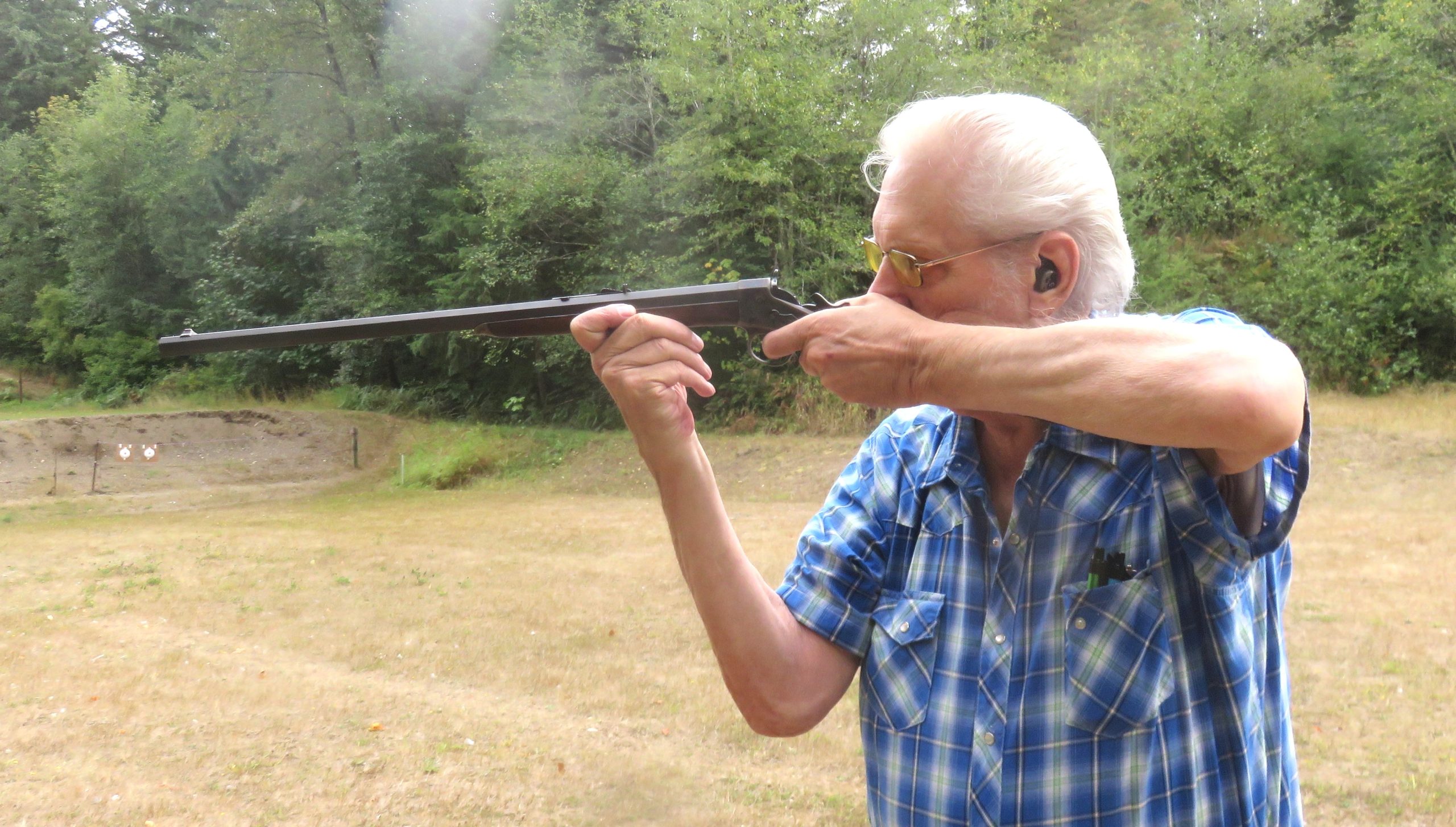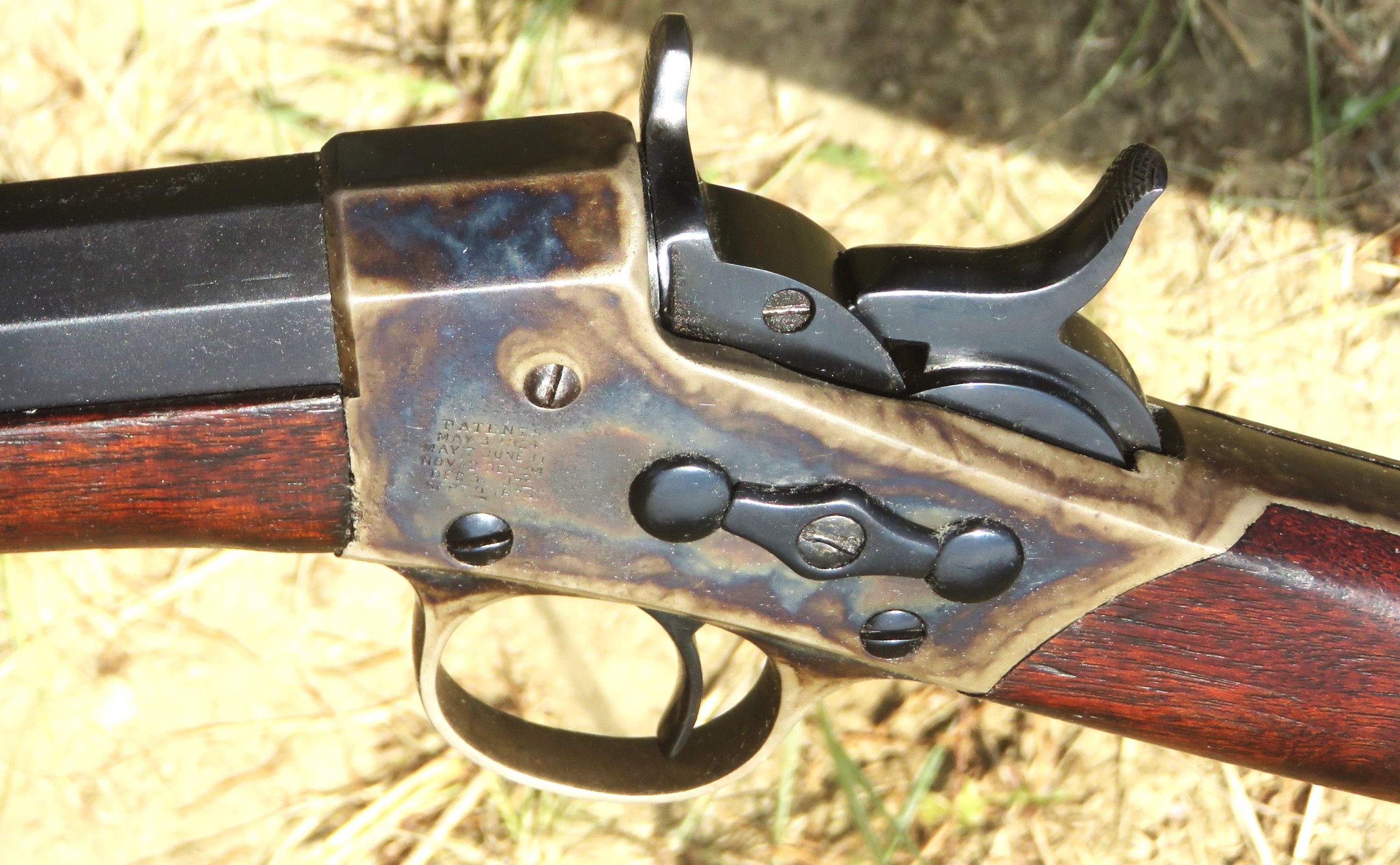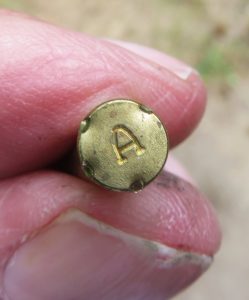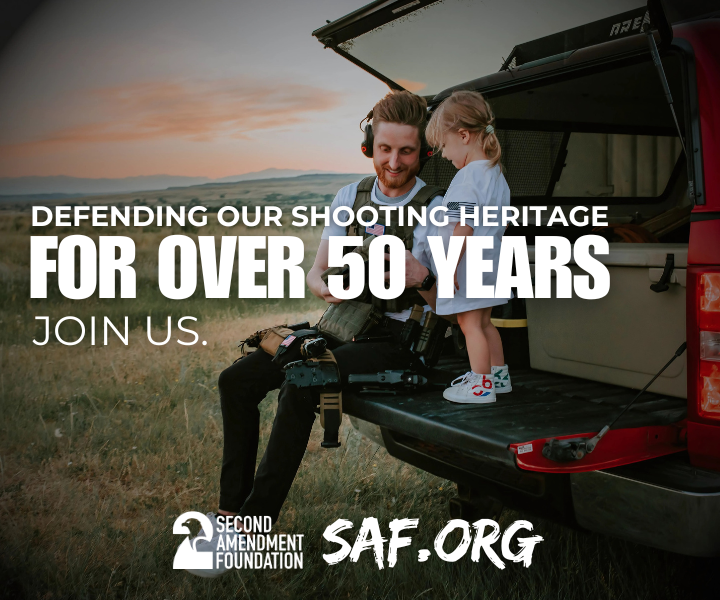
By Mike Nesbitt | Contributing Editor
Remington’s little Number 2 rolling block is a rifle that I had wanted for quite a while. They are not what I’d call rare but, at the same time, you don’t generally see them every day.
The Number 2 rifles were made for smaller cartridges, .22s and on up, for both rimfire and center fire ammunition. The caliber I wanted was a plain .22 Long Rifle. Here’s how I got one.
But first let me mention the background of the Remington No. 2 rolling block, a very interesting rifle. According to Roy Marcot, in his book Remington Rolling Block Rifles, Carbines, & Shotguns, this rifle was introduced in 1872 as the Remington Gem Rifle. It was referred to with that title in their advertising which, at first, only mentioned the new light rifle as being available for rimfire cartridges. Shortly after that, by March the following year, Remington had renamed the little rifle by calling it their Number 2 Sporting Rifle. (The Remington Number 1 Rifle, of course, was the large rolling block.) The main feature about this little rifle was the small action and, perhaps, its perch belly stock.
The action for this rifle was developed from the action for the Remington Army pistol (in .50 caliber) of 1871. Where the upper tang formed the backstrap for the grip on the pistol, on the rifle it was simply straighten to lay in the wrist of the stock. Likewise, the lower tang was treated the same way and, on the rifle, those two tangs are the same length. (On the Number 1 Sporting and Target rifles, the lower tang is longer and it has a screw at the back going just into the wood of the buttstock to hold the stock more rigid. Military rifles did not have that feature.) And for the new light Number 2 rifle, that pistol action was a dandy.

In 1890 the Number 2 rifle was joined but not replaced by the Remington Number 4 rolling block rifle. The Number 4 is lighter than the Number 2 and it was not made available in such a wide range of calibers, being made only in .22, .25, and .32 caliber rimfires. In contrast to that, the Number 2 was made for both rimfire and centerfire cartridges, up to .44 caliber. The No. 2 and No. 4 rifles were both in production until the No. 2 was discontinued in 1909 while the No. 4 was cataloged up until 1934. The main selling point between those two rifles was the price and the No. 4 was advertised as the “boy’s rifle.”
That doesn’t mean the No. 2 was a whole lot bigger. My No. 2 Remington in .22-caliber has a 24” octagon barrel and it weighs just under six pounds. Such a light and handy little rifle is simply a joy to hold and to shoot.
But finding a good Remington Number 2 rifle in .22-caliber wasn’t the easiest. Of course, if you’re not looking for one, you might see them every day. When you are looking for one, they seem to get really shy and hide. That is how it seemed to me.
Then, at the Matthew Quigley Buffalo Rifle Match in 2024, I stumbled in to Kenn Womack’s tent on vendors’ row, behind the Quigley firing line, and found two of the Number 2 rifles. One was in pretty good shape and it was in .22 caliber, although that was for the .22 Long because it was made before the .22 Long Rifle cartridge was introduced by Stevens in 1887 or so. The other was not in as good condition and it was in a .32 rimfire caliber. Both of those rifles were interesting and I went back to camp to report about finding those on gun to my partner, Allen Cunniff. Allen had also been looking for a Remington Number 2 rifle.

Allen went with me back to Womack’s tent and then cursed me for finding the .22, which he liked more than he expected. In fact, he hadn’t expected to find a rifle to buy so he was not prepared. That because obvious when he borrowed money from me to buy the gun. And if he hadn’t bought it, I would have.
But that left me looking more at the .32-caliber rifle which was wearing a cheaper price tag. I talked with Kenn about it while considering the pros and cons, and then made him an offer which he accepted with some reluctance. Kenn also told me that the .32 caliber gun could not be converted to .22 but he did not explain why. I wondered about that because, of course, my first intention was to convert this rifle to .22-caliber.

My guess is that Kenn didn’t think the firing pin on the .32 caliber gun would “reach into the rim” far enough on the .22 cartridges to make it fire reliably. So, when I showed the rifle to Pat Dulin, the top gunsmith at C. Sharps Arms, I ask about that. Pat simply and quietly said, “We can make that into a .22,” with no further explanation.
So, Pat got the job of converting this well used rolling block in .32 rimfire into an almost new looking rifle in .22-caliber. That was not going to be an easy or simple task because the rifle needed attention in almost all areas. The wood was well worn and even burned in a couple of places. Those stocks, both forearm and butt stock, would best be replaced but I wasn’t in favor of having new stocks made. The barrel was probably the easiest to fix, it would simply be re-lined with a .22 liner. We decided to leave the original sights as they were although Pat did ask me if I’d want a tang sight for it. I replied with a “Yes, but who makes a tang sight for it these days?” “Nobody,” Pat came back but then added, “Those just show up now and then.”
Working on the Number 2 rifle was something Pat would do when he could, almost in his spare time. Pat’s main concern was centered on his work and supervising to get new Sharps rifles made to fill orders at C. Sharps Arms and my .22 conversion job certainly had a lower priority. We had agreed, as I left the rifle in his care, that I’d want the gun to ready when I visited the shop again in June of this year.

And ready it was, looking almost like a new rifle. The action and the butt plate were expertly color casehardened and the gun sported new wood. Those stocks were not newly made. Instead, Pat had bought old stocks in good condition from Kenn Womack, from his Rolling Block Parts business (rollingblockparts.com). No tang sight had been found so this converted .22 rifle was still wearing its original open sight and front blade on the barrel. To say the least, I was very pleased.
Naturally, the .22 rifle went with me to the Quigley match, even though I’d only get to admire it more while in camp at “Quigleyville.” But I simply needed to shoot it so the converted Remington No. 2 rifle did go with me to the firing line during one of the practice days. The target I shot at with the .22, using CCI’s standard velocity .22 Long Rifle ammo, was their target #4, diamond out at 405 yards. There are no close-range targets at Quigley, so I didn’t expect to hit anything. And no hits with the .22 could be noticed but I still enjoyed shooting the little gun and admiring the nice trigger pull it has. Only four shots were fired and those quickly told me how nicely the rifle was to shoot and that it was shooting without any problems.
But problems did occur after getting home and trying the rifle on the Black Powder Range at the Capitol City Rifle & Pistol Club near Olympia, Washington. After about 30 shots, the gun quit firing. Inspection of the un-fired cartridges showed how the firing pin was only striking the edge of the rim, not toward center enough to fire the round. The block was removed from the rifle and only the block, which contains the firing pin, was sent back to Pat in Montana.
Upon receiving the block, Pat asked me for some details about what was happening, looking for ideas on what to fix. Based on the information that I gave to him, he reshaped the firing pin, building up to top part in an inverted “V” so the firing pin, which strikes the cartridge’s rim on the bottom, would hit more than just the edge of the rim. And the block was then returned to me quite quickly.
Getting the block back in the rifle was easy, I let Allen do it. After all, he’s the one who took it out… And then the rifle was taken to the range again. But once more, things went very well for about 30 shots and then the rifle wouldn’t fire the cartridges. Perhaps the firing pin was soft enough to lose its “hit,” as required to fire the cartridge.

That was when Allen, my favorite and closest gunsmith, said, “Let me look at that.” Allen took the rifle to his shop and then returned it to me almost as fast. He said he had machined a new firing pin for the gun which would strike more than the edge of the rim. While simply looking at the end of the firing pin, as it sits in the face of the breech block, it has a more rounded shape and simply fills the hole more completely. Maybe that’s what it needed because now the rifle fires every time it is asked to.
The shooting I’ve done with the rifle since Allen installed the new, custom-made firing pin was done while shooting with Allen. He wanted to see the rifle in action. My shooting began with a small paper target posted at just 25 yards because the rifle still needed to be sighted-in. Again, I was using my favorite .22 Long Rifle ammo, CCI’s standard velocity stuff which only sounds off with a soft “sput” when fired through the 24-inch barrel. After raising the rear sight one notch, the gun started hitting toward center and I moved from shooting at the paper target to some of the gongs which were simply too tempting to ignore.
Now I’ve got the Remington Number 2 rifle in .22 Long Rifle that I had wanted. It will be used with some frequency, especially for shooting at the gongs on our club’s trail-walk. Maybe, if a tang sight is found for this rifle, I might use it in some of our Old Style .22 Matches which are quite popular in our club. And the firing pin problems do support Kenn Womack’s comment about the difficulty of converting a .32 rimfire to .22 caliber. I’ll say it can be done but it must be done with considerations.
As a closing comment, Kenn Womack currently says he has some of the old Remington Number 2 rifles available, just in case you are interested.


